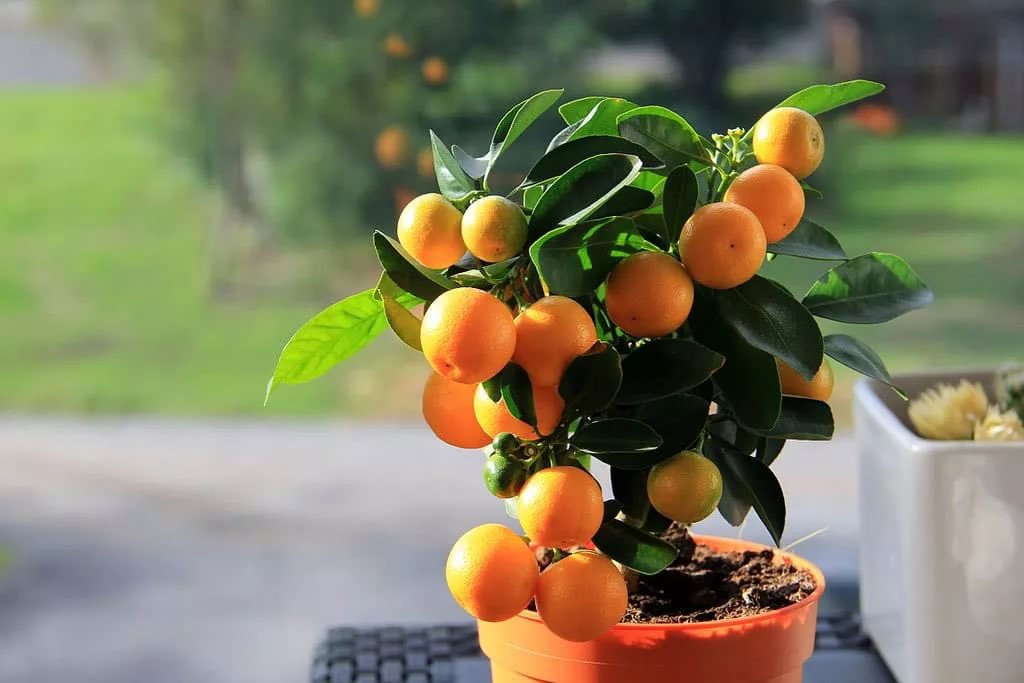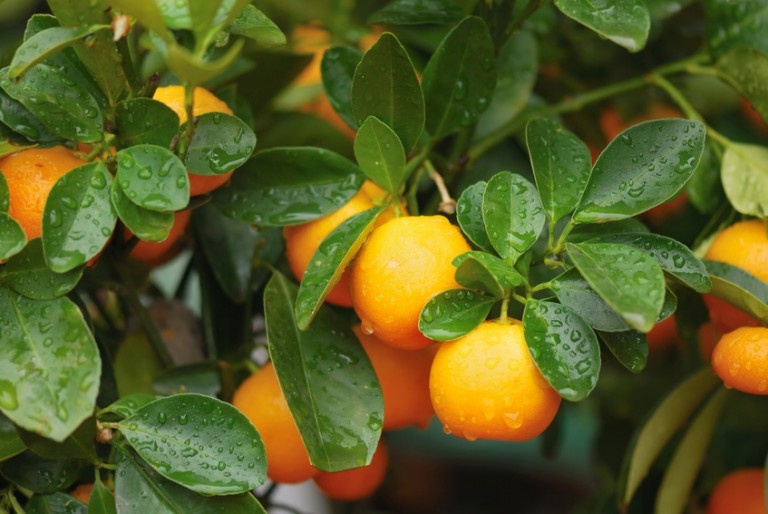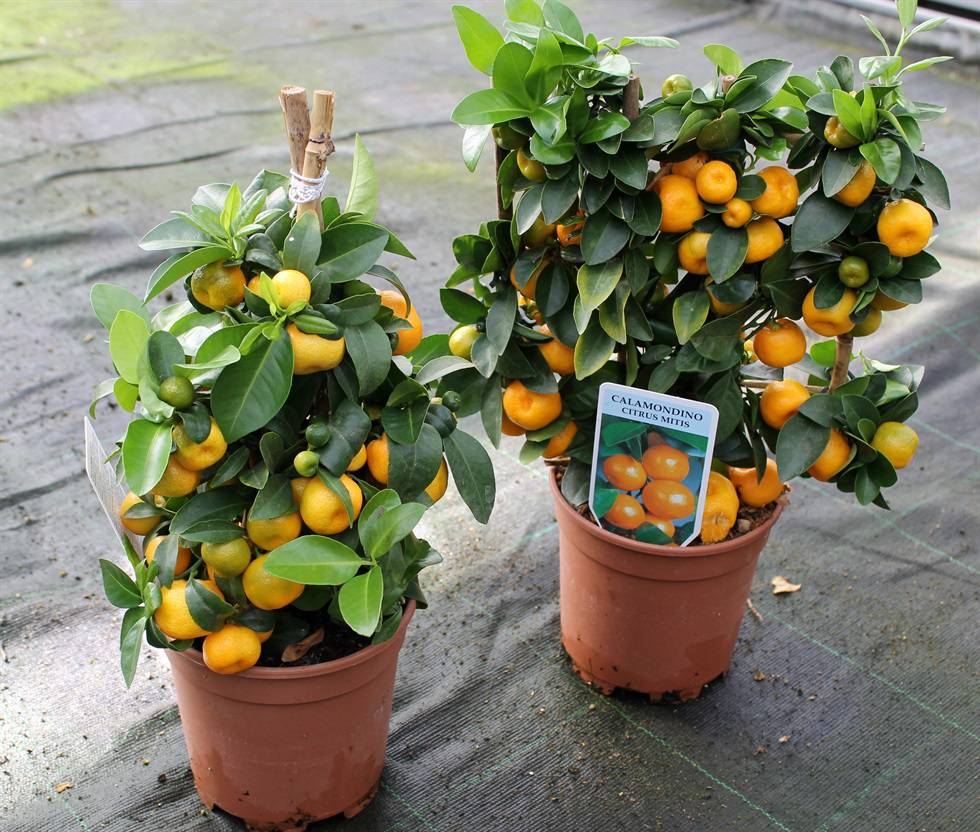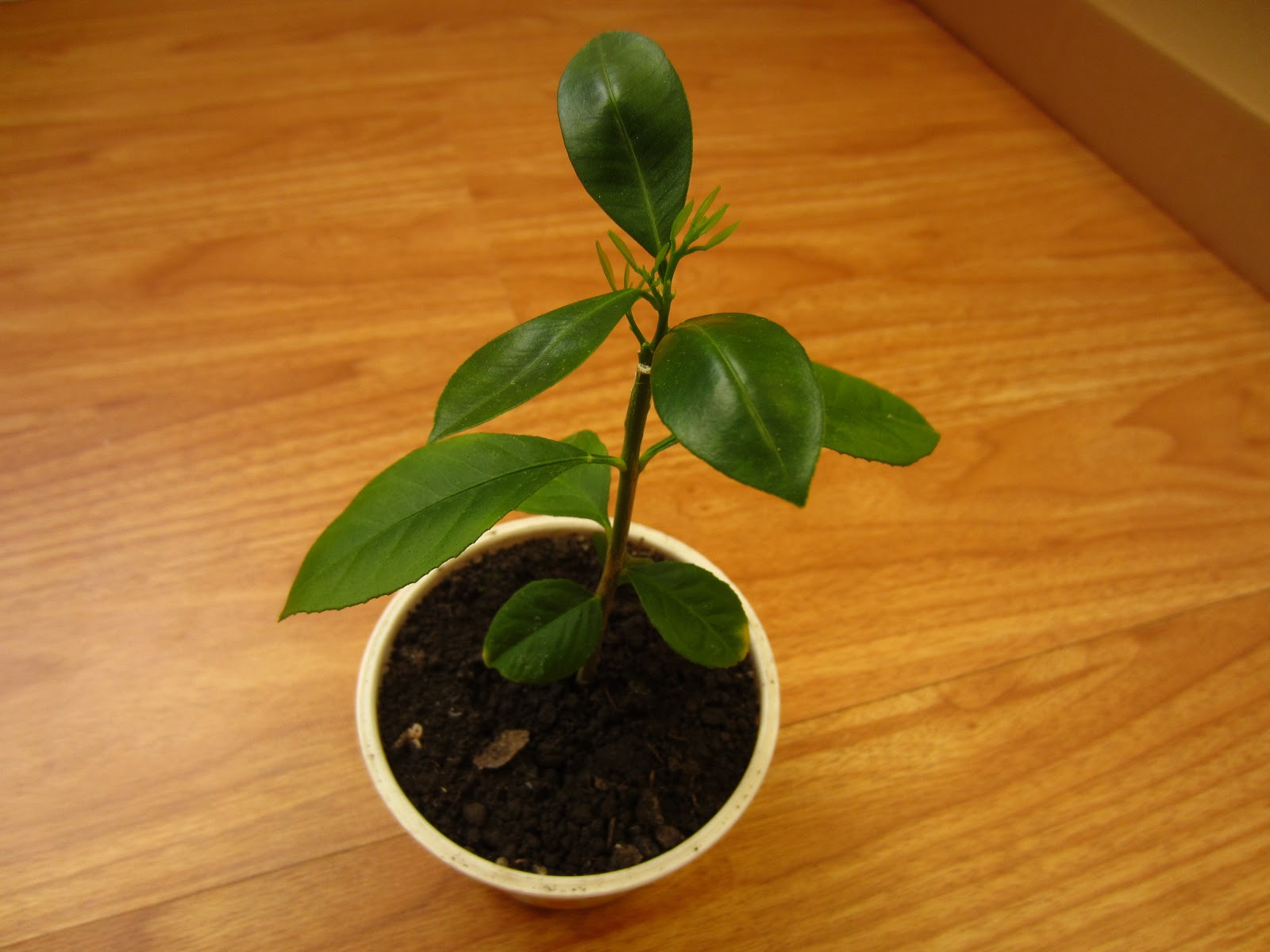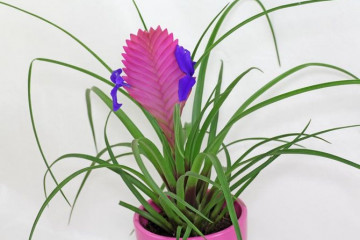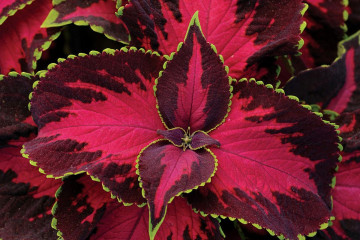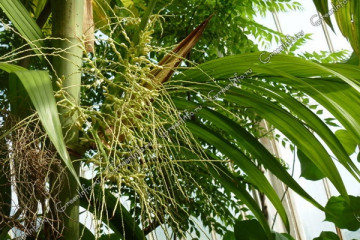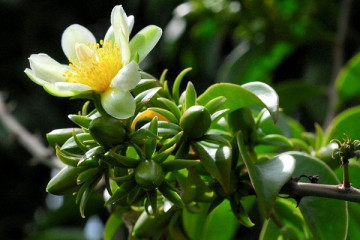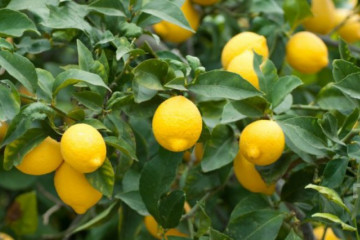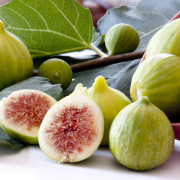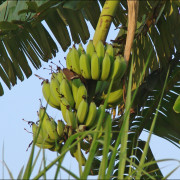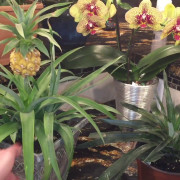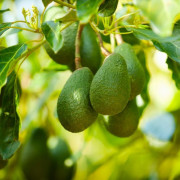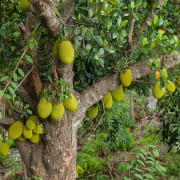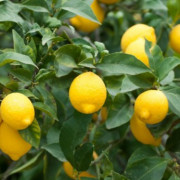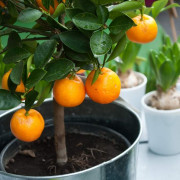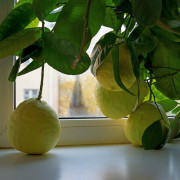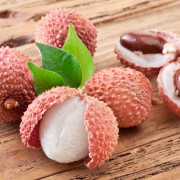Calamondin - home care for citrus
Content:
A worthy alternative to lemons and oranges is calamondin. Even a beginner grower can take care of the plant, it is unpretentious and decorative.
Calamondin - what is it?
Citrofortunella (Calamondin) is a plant also known to flower growers as "indoor tangerine" or "golden orange". This is a hybrid, its "parents" are mandarin and kumquat. In "captivity" calamondin, which can be called a micro-citrus, reaches a height of 0.6-1.5 m.
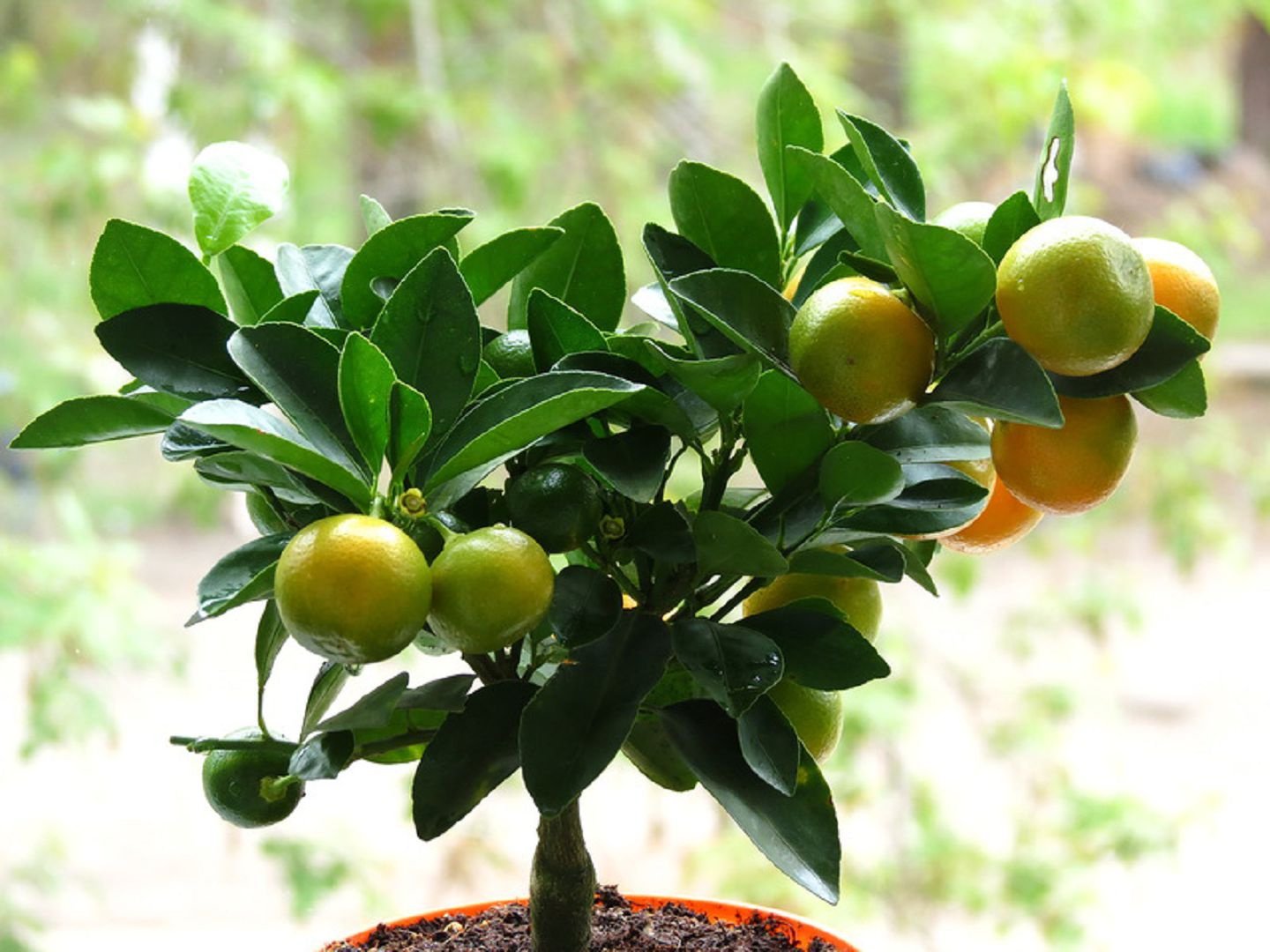
Calamondin is a suitable option for those who want to grow something unusual and exotic on the windowsill.
Brownish rough shoots often branch, the crown is densely leafy. Leaves are leathery, smooth, 4-7 cm long. The tip is pointed, the central vein is pronounced. Citrofortunella microcarpa or citrus calamondin is a self-pollinating plant.
At home, flower growers grow different varieties of Calamondin:
- Variegata - variegated green and white leaves;
- Margarita Big - pear-shaped citruses;
- Meiva - sweet fruits almost without seeds;
- Tiger - leaves with a golden border;
- Peters - profuse flowering and very sour fruits;
- Shikinari are the largest and most delicious citrus fruits.
Calamondin - home care
Caring for citrofortunella at home is simple. The main thing is to create an optimal microclimate for the plant or close to it.
| Parameter | Recommendations |
| Location | Next to a window facing east, west. In summer - glazed balcony, veranda. There should be no cold drafts or stuffiness in the room. |
| Lighting | Bright but diffused light, out of direct sunlight. The duration of daylight hours is 8-10 hours, additional lighting will be required in winter. |
| Temperature | During active growing season - +24 ... +28 ° С, during winter - +15 ... +18 ° С. |
| Air humidity | The minimum is 70%. To maintain the required humidity level, it is necessary to spray calamondin daily, during flowering - the air next to it, avoiding drops on the petals. |
| Priming | Shop substrate for citrus fruits or a mixture of turf, humus and coarse sand (2: 1: 1). |
| Pot | The diameter should be approximately 1.5 times the earthen lump. It is imperative to have drainage holes and a layer of expanded clay (3-4 cm) at the bottom. |
The nuances of caring for calamondin:
- Watering. Calamondin is a citrus, so watering is very important for it. When dry, the soil is moistened 1-1.5 cm deep. Usually - once every 2-3 days, in the heat - every day. In winter - less often, every 8-12 days. Young calamondins tolerate moisture deficiency worse than adult plants.
- Fertilization. To do this, use root or foliar dressing (it is recommended to alternate them) with any fertilizer for citrus every 10-12 days during the active growing season and monthly in winter. You need to dilute the product according to the instructions.
- Pruning. The first time the formation of the crown is carried out when the plant reaches a height of 0.25 m. The optimal period is February-April, in summer - only sanitary pruning. You need to remove all shoots that clearly violate the correct spherical shape of the crown, broken, sick or damaged by insects. The height of the stem of an adult plant is 0.3-0.6 m.The optimal crown configuration for calamondin is sparse-tiered.
Citrofortunella transplant
The first time calamondin needs to be transplanted 2-3 weeks after purchase. Further, for young plants, the procedure is carried out annually at the end of the dormant period. Calamondins aged 5 years and older are transplanted every 3 years.
Algorithm of the procedure:
- Water the calamondin abundantly 2-3 hours before transplanting to make it easier to remove from the container.
- Pour a drainage layer into a new pot with a diameter of 5-8 cm larger than the previous one, fill it with fresh substrate by about a third.
- Carefully remove the plant from the container, keeping a lump of soil on the roots intact if possible.
- Move the citrofortunella to a new pot, fill up the soil, gradually compacting it. The root collar should remain at the same level as before.
- Water the plant abundantly. For the next 5-6 weeks, provide especially careful protection against drafts and direct sunlight.
Store-bought calamondin needs to be given time to adapt, otherwise the plant may not survive the stress associated with changing conditions of detention and simultaneous transplantation.
When and how the plant blooms and bears fruit
Calamondin bloom is abundant, begins in May and lasts until mid-summer. The flowers are star-shaped, up to 2.5 cm in diameter, snow-white or milky. They are collected in inflorescences of 2-3, located in the axils of the leaves.
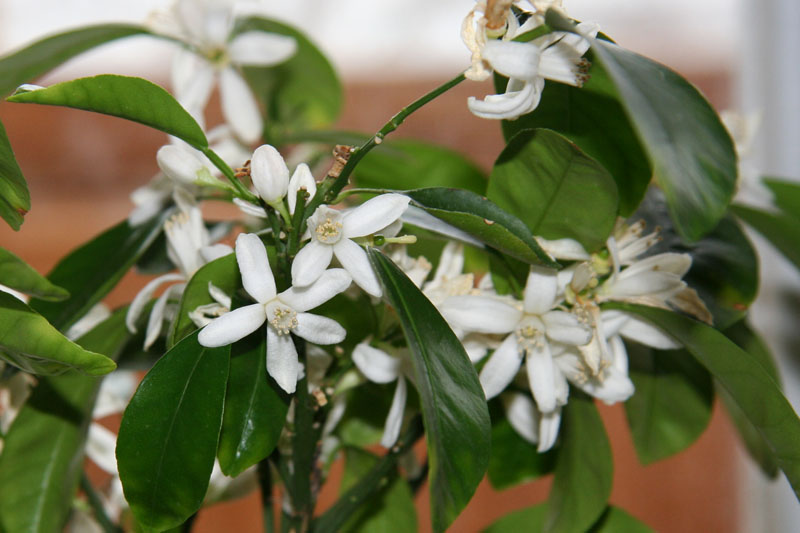
A flower grower can "help" the calamondin with pollination, this increases the chances of harvesting
The fruits ripen in 3.5-4 months. They look like miniature tangerines with a diameter of 3-4 cm and a weight of 10-12 g. The skin is thin, sweetish. The pulp tastes like a slightly bitter lemon, it contains a lot of seeds. Eating calamondines is recommended along with the peel to "compensate" for the acid.
Reproduction methods
Reproduction of calamondin by cuttings is the most popular method among flower growers. It allows you to preserve the varietal characteristics of the plant. Procedure:
- In May-June, cut obliquely the apical shoots 10-12 cm long with 3-4 internodes. Cut the leaves in half.
- Sprinkle the cut with any powdery root stimulant or hold it for 2-3 hours in a solution of such a preparation.
- Plant the cuttings in a container filled with a moist mixture of peat and sand (1: 1). Cover the top with a plastic bag.
- Move the "greenhouse" to a place with good lighting, ensure the temperature is at least +25 ° С. As the soil dries, water the cuttings, air the plants daily, removing the bag for 15-20 minutes.
- After 4-6 weeks, plant the specimens on which new leaves have appeared, one at a time in pots with a volume of 2-3 liters. Take care of mature plants.
Compared to cuttings, propagation of calamondin by seeds is rarely practiced. Their germination rate is 40-50%. For fruiting in the future, grafting will be required. Step-by-step instructions for propagating a flower by seeds:
- Remove seeds from ripe fresh (not dried) fruits, wash off the pulp.
- Dry the seeds, store in the refrigerator until March in a container with damp peat or sand.
- In early spring, soak the seeds in a solution of any biostimulant for 2-3 days.
- Plant in containers filled with soil for seedlings, deepening by 1.5-2 cm, water well and cover with glass or film.
- Provide a temperature of about +28 ° C, bottom heating and darkness.Spray the soil every 2-3 days, remove the shelter daily for ventilation.
- When seedlings appear (after a month and a half), transfer the containers to the light, after another 7-10 days, remove the shelter.
- When four true leaves appear, plant the calamondins in individual containers.
Problems with growing citrofortunella
Most often, flower growers ask the question: what to do if calamondin sheds leaves and its branches dry. But with its cultivation, other problems are also possible:
| Description of the problem | Possible causes and recommendations |
| Leaves turn yellow, shoots dry | High air temperature, low humidity, direct sunlight, rare watering. It is necessary to identify and eliminate errors in the care. |
| The base of the stem rots, "weeping" spots appear on the leaves and shoots | Excess moisture combined with low temperatures. In advanced cases, the plant can no longer be saved. If the problem is noticed at an early stage of development, cut off all affected leaves, branches, tissues on the trunk, optimize the conditions of detention, replace the water for irrigation for 5-8 weeks with a weak solution of any fungicide. |
| Fruits fall off without ripening | Nutrient deficiency, improper fertilization. Eliminate care errors. Sometimes the plant will naturally normalize the crop itself. |
| The plant does not bloom | Wrong conditions of detention, most often - a lack of light, an unsuitable substrate, frequent movements of the pot for no reason. Eliminate care errors. |
| Drops the leaves | Drafts indoors by sprinkling with cold water. Negative factors need to be eliminated. It happens that the reason is natural stress caused by transplantation, adaptation to new conditions after the purchase. |
| Pest attacks (aphids, whiteflies, spider mites, scale insects, false scales) | Pests are visible to the naked eye, it is necessary to regularly inspect the plant. Having found a problem, if possible, collect the insects by hand, treat the calamondin with soap foam, then with a suitable insecticide or acaricide. |
| Fungal diseases (wilting of leaves, spots on them) | Regular inspection of the plant is recommended - this way you can detect the disease at an early stage. All damaged tissues should be cut off, the "wounds" should be sprinkled with crushed chalk or ash, the plant and the soil should be treated 2-3 times with a solution of any fungicide. |
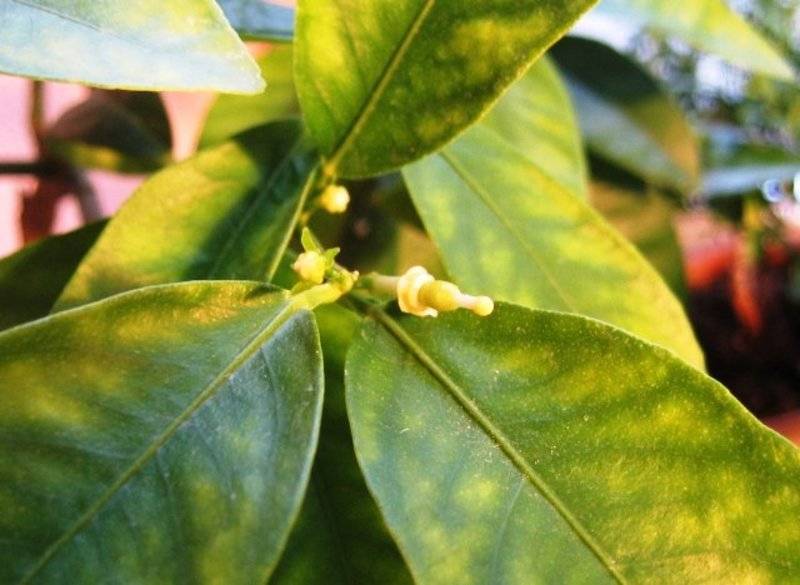
The yellowing leaves of calamondin are most often the result of florist's mistakes in caring for him.
Calamondin is an exotic citrus plant that has been successfully domesticated by amateur growers. Calamondin is prized for its visual appeal. Edible fruits become a pleasant bonus.
